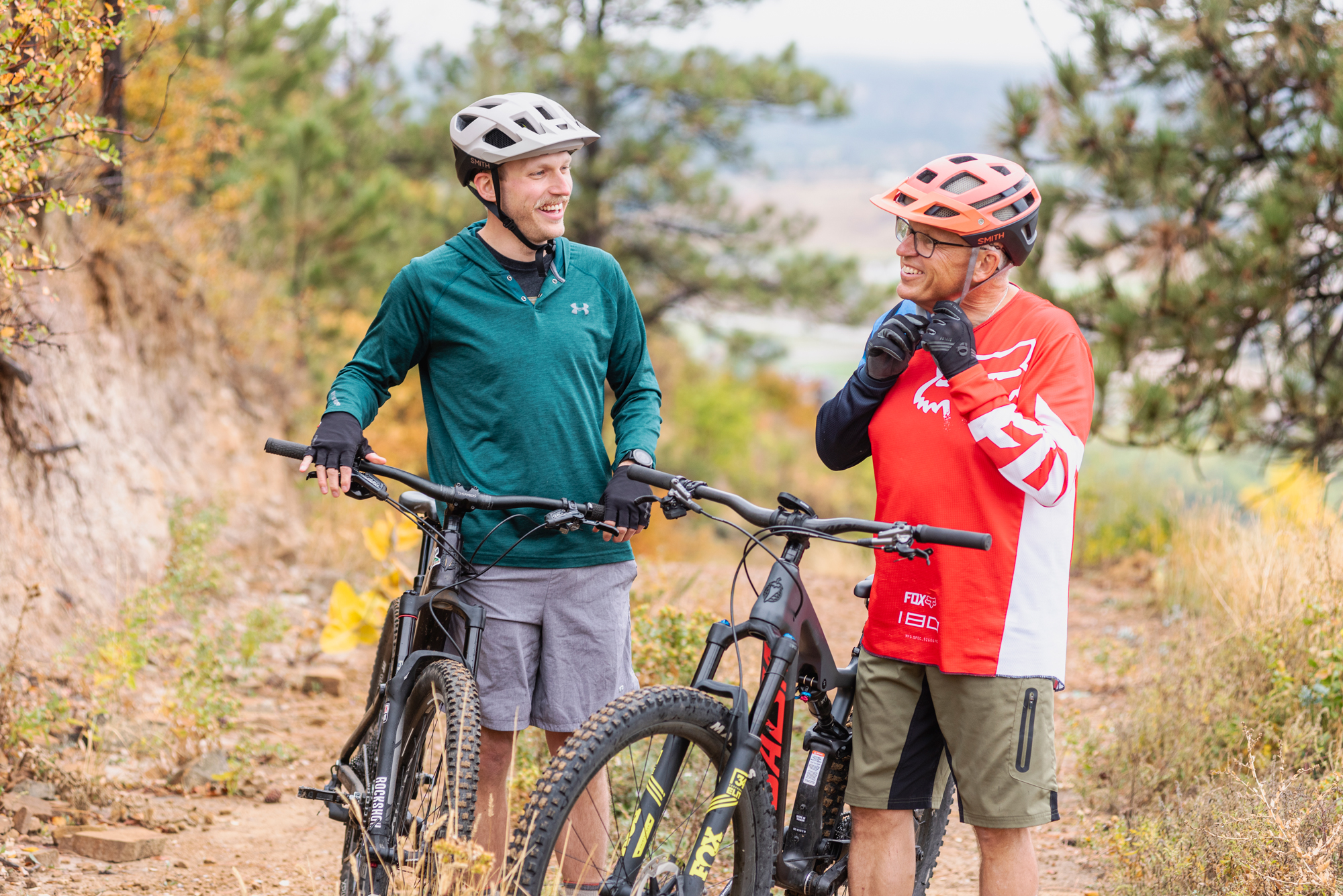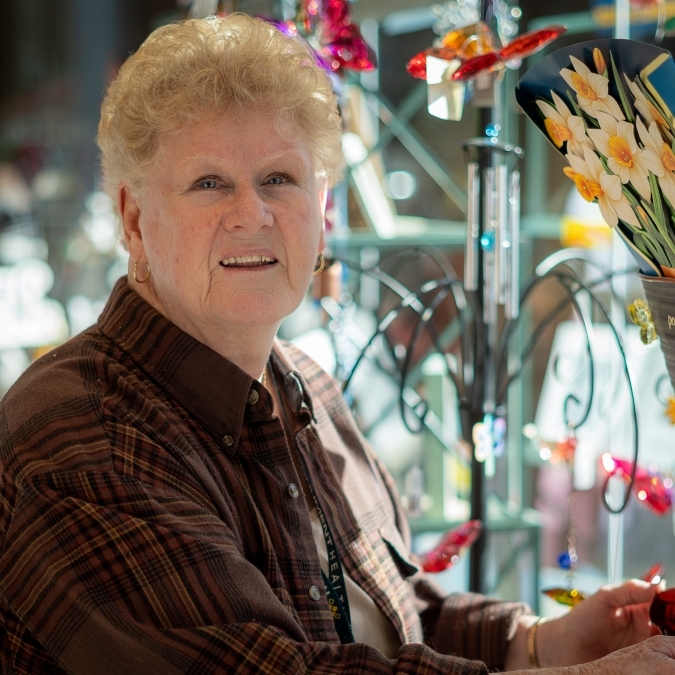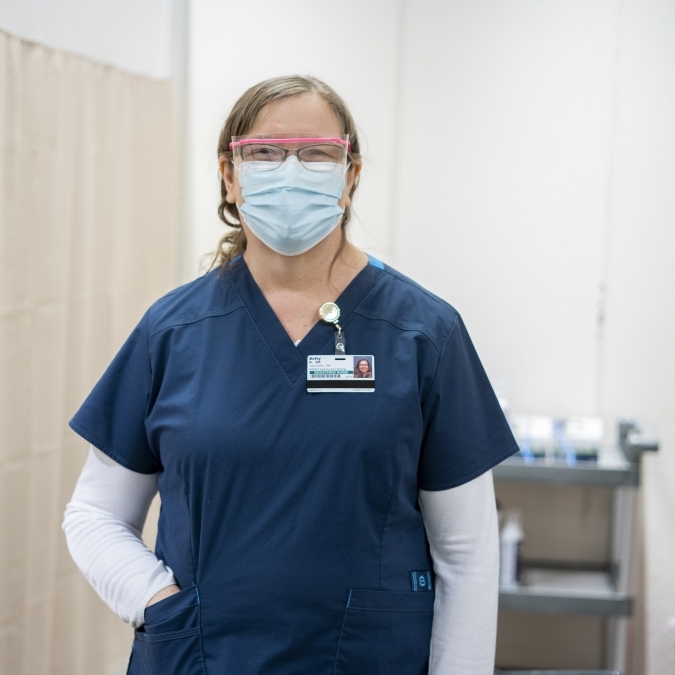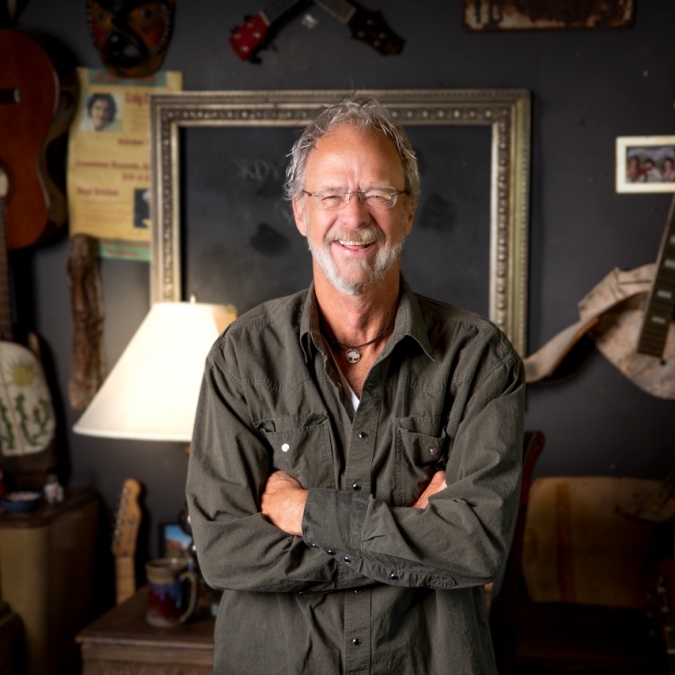Whitney Driscoll started biking with an ulterior motive. “I really, really like to ski,” he said. “So, I started mountain biking to stay in shape for skiing.” But as he explored in and around his hometown of Spearfish on the seat of his bike, he started to enjoy the sport for its own charms. To give himself a goal, Whitney started to enter bike races — including the Dakota Five-O, an annual 50-mile mountain bike race.
In December 2020, something started to change for Whitney. “I know the exact spot where I first noticed it. I call it ‘heart attack hill,’” he said. Whitney was riding a gravel trail in the Black Hills when he noticed a strange feeling to the left of his sternum. “It kept happening into January. So, I called my friend who’s a vascular surgeon. He told me I needed to go in and start ruling some very serious things out.” Whitney made an appointment to see his doctor, Jay Bogard, M.D., in Spearfish. Whitney went through a stress test, but it didn’t show any abnormalities.
“After that, my wife and I went down to Arizona,” Whitney said. “We were doing some rides down there that I had done easily before, but it left me feeling wiped out. I finally told my wife that I needed to see the doctor again. So I called Dr. Bogard from Arizona and made an appointment.”
Whitney’s Experience
Dr. Bogard was determined to pinpoint what was causing Whitney’s chest discomfort and fatigue. “I think the phrase he used was ‘full-court press,’” Whitney said. Dr. Bogard discovered that Whitney’s troponin levels were elevated. Troponin is a protein that appears in blood when the heart is damaged. Dr. Bogard then ordered an echocardiogram. The mood changed when Dr. Bogard was able to see Whitney’s heart.
Whitney was then rushed by ambulance to Rapid City for surgery. “I realized how serious it was when the cardiologist, Dr. Heilman, met me at the door of the ER in Rapid City,” Whitney said. Whitney had major blockages in his heart and received a stent.
Following recovery, Whitney found that his support from Monument Health didn’t end. “After I went home, Dr. Bogard and Dr. Heilman took the time to call me — it wasn’t me calling them; they called me,” Whitney explained. “They really helped to find the right balance of medication that worked with my active lifestyle.”
Following his surgery, Whitney returned to mountain biking and skiing. He attributed his speedy return to his exercise routine to the tailored attention he received from his caregivers at Monument Health. “Dr. Bogard has been awesome. He’s super available, whether it’s sending him a quick message on MyChart or giving him a call. The individualized care has been incredible.”
Taking It Seriously
John Heilman, M.D., FACC, Chairman of the Cardiovascular Department at Monument Health and Whitney Driscoll’s cardiologist, points out how his patient’s actions made for a successful experience during his cardiac event.
“Whitney was persistent and advocated for himself,” Dr. Heilman shared. “It’s very important for patients to pay attention to any new or unusual symptoms.” Whitney’s decisive actions contributed to his ultimate recovery. “Some people recognize the seriousness of these symptoms immediately,” Dr. Heilman said.
“Others will have symptoms for months and then seek medical attention. The third group may deny the seriousness of their symptoms and chalk it up to indigestion or a cold.”
Dr. Heilman reminds people not to ignore these and other symptoms:
- Shortness of breath
- Tightness or squeezing sensation in the chest
- Sweating
- Feeling ill at ease
- Nausea
- Pain radiating from the chest to the back, arm or jaw
Ryan’s Experience
A little over a year later, Whitney’s 27-year-old son, Ryan, began experiencing chest discomfort. “I was diagnosed with AVNRT back in eighth grade,” Ryan explained. Atrioventricular nodal reentrant tachycardia causes the heart to beat much faster than normal. To manage the symptoms, people afflicted with AVNRT use different breathing techniques to reduce their heart rate during trachyocartic episodes.
One day, his ability to manage his AVNRT changed. “All of a sudden my breathing techniques weren’t working as well. I couldn’t get my heart to slow down very much,” Ryan said. “I was talking to my dad about it, and he suggested I go see Dr. Bogard. So, I made an appointment.”
When Ryan went to Dr. Bogard’s office in Spearfish, his heart was beating around 200 beats per minute. “I was in Dr. Bogard’s office for about 20 minutes before they sent me to the ER to get my heart rate down,” Ryan said.
Once caregivers at the Spearfish ER were able to slow Ryan’s heart rate, he was taken by ambulance to Rapid City Hospital for surgery. “I remember being really impressed with the new Heart and Vascular Institute. It’s really cool to have access to a facility like that in South Dakota,” Ryan said. “The other thing that really blew me away was how well each team worked and communicated together.”
Ryan’s surgery worked to normalize his heartbeat. “My surgery lasted for three hours. I recovered for a few hours, and I was able to go home around 8 p.m.,” he said.
Both father and son faced unique challenges and in the end were able to walk away from their experiences with new perspectives and grateful attitudes. Whitney has this advice: “If you feel your heart and it’s not feeling quite right, be humble enough to go get yourself checked out.”



